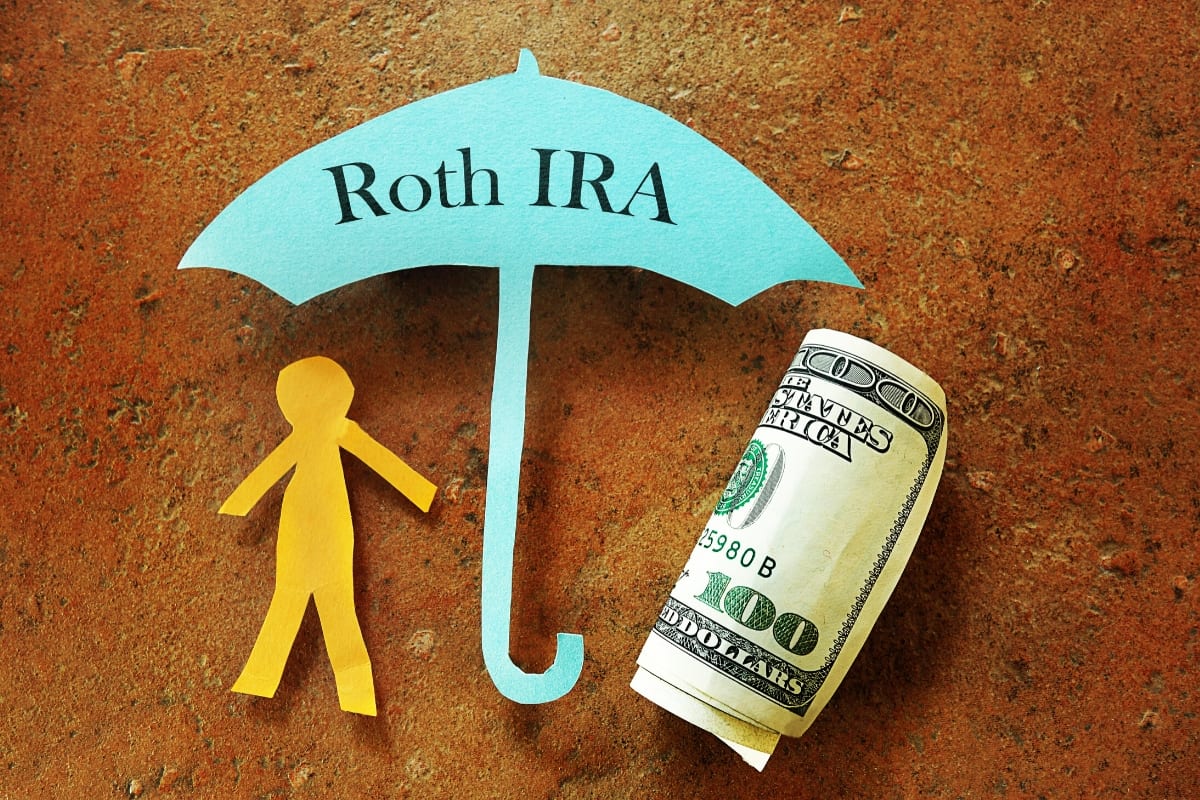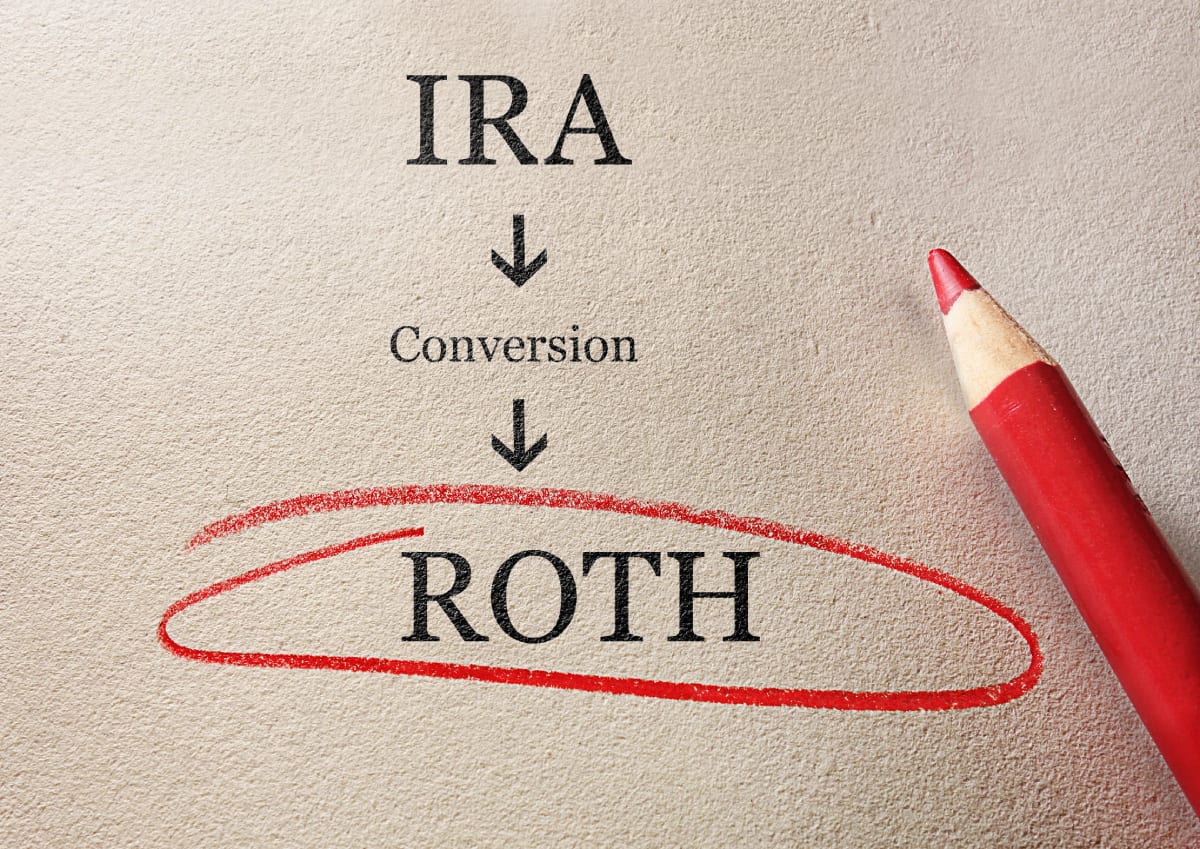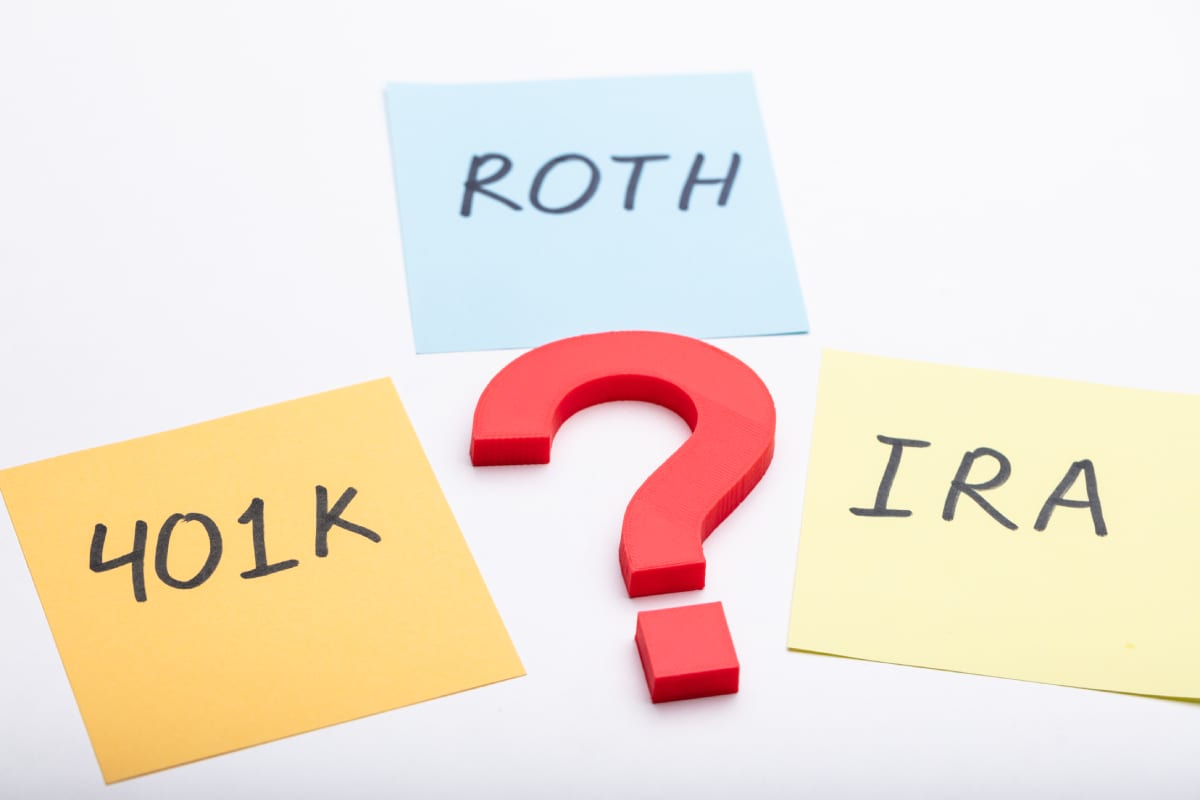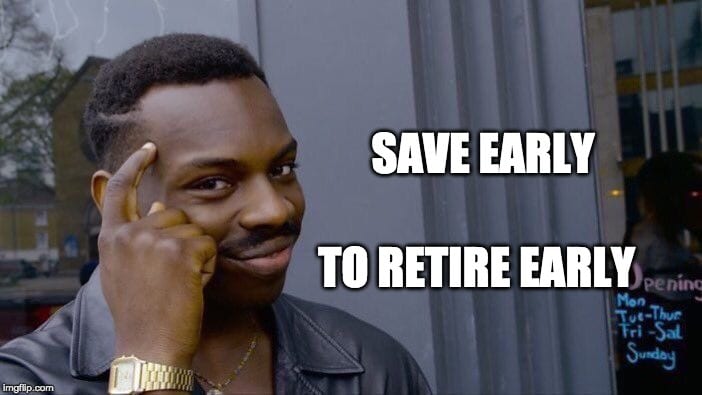Last Updated on March 28, 2025
Are you looking to start socking away cash for retirement? Want to maximize the resources you have in those twilight years or maybe even retire early? Or maybe you have heard of how a “Roth conversion ladder” can help you do this. First, you’d need to know a bit more about IRAs or Individual Retirement Arrangements.
To start off, there are two kinds of IRA accounts — traditional and Roth — that can be good options when saving for retirement. However, Roth IRAs can be particularly beneficial, especially when using the Roth conversion ladder strategy (more on that below).

So let’s take a look at Roth IRAs and how they can help.
What’s a Roth IRA?

A Roth IRA is a type of account that takes a “pay now” approach to retirement savings. In most cases, you’ll put pre-tax income into a retirement account and then pay taxes on any money you withdraw later down the line. That’s true for 401Ks, traditional IRAs, and more.
But with Roth accounts, you pay taxes on your income first and then put it into savings. This keeps you from owing thousands in taxes during retirement (when your income is probably a lot more limited than it is now). It’s also helpful if you expect your tax bracket to increase over the next few decades. With a Roth IRA, you can pay the lower taxes now rather than the higher ones you’d be subject to later on.
Here are some basic details about Roth IRAs:
- You can only contribute up to $6,000 per year (this goes up to $7,000 once you reach age 50).
- There are no minimum contributions.
- There are no age limits.
- You can’t make more than $137,000 (if you file your taxes solo) or $203,000 (if you file jointly).
- You can access your Roth IRA funds at 59.5 years of age with no tax or withdrawal penalty.
You can open a Roth IRA account with any brokerage, including Charles Schwab, Ameritrade, Merrill Lynch, and more. There is usually no cost to open these accounts as long as you make a minimum deposit.
Can a Roth IRA Really Make a Difference?

The main benefit with Roth IRAs comes from the tax break you get upon withdrawal. But can it really make that big a difference in the long run?
You bet it can. Just a quick look at this Roth IRA calculator to show the true power of these accounts. Let’s say you’re 25, and you fund your Roth account with an initial deposit of $1,000. From then on, you contribute $5,500 per year (only around $450 per month or $225 per paycheck).
If you retire at 65, you can expect to see your savings total almost $900,000 (nearly $1 million!) by the time you exit the workforce. Compared to a traditional, taxable savings account, you’d have nearly $300,000 more in the bank as you enter retirement.
The Key to Retiring Early: A Roth Conversion Ladder

Now, if you’re hoping to retire early, Roth IRAs can help there, too. It just takes serious planning and some careful calculations.
Dubbed the “Roth conversion ladder,” the strategy involves transferring money from another retirement account (a 401K or traditional IRA, which has no contributions limits) and then transferring those funds to a Roth account.
Here’s how it works:
- Start backward and determine when you want to retire. Funds converted into a Roth IRA must be there at least five years before they can be accessed, so you’ll need to plan your transfers accordingly.
- Max out your 401K and traditional IRA contributions. This will keep your tax bracket low (important in the next step) and will give you more to roll into your tax-free Roth account later on.
- Figure out how much you need to live on. If you need $50,000 per year, roll that amount from your 401k or traditional IRA into your Roth account at least five years before your planned retirement. You’ll pay taxes on this amount, so keep it to only the minimum you need (and make sure you’re in as low as tax bracket as possible).
- Repeat this annually. This will give you access to new, tax-free funds in your Roth IRA every year.
If you plan to retire early, this sort of approach is key if you want to reduce your costs. Pulling funds from any retirement account before you hit 59.5 will mean a 10% penalty. The Roth conversion ladder helps you circumvent this rule and access your money early as needed.
An important note: Keep in mind the conversion ladder is a strategy ideal for early retirement. You still need to make sure you have plenty of funds to last you beyond that — and remember, you may not be eligible for pension or Social Security benefits for many years. Be careful not to deplete your savings in early retirement just to quit the workforce a few years early.
Don’t Ignore Your 401K

Roth IRAs are great accounts for retirement savings, but don’t focus on these only — especially if you have access to an employer-provided 401K. 401Ks typically come with employer-matching, meaning your company will contribute a certain amount of cash toward your retirement every year as long as you do the same.
This is essentially free money, and it’s not a perk you’ll enjoy with any other type of retirement account. It can also help you maximize the funds you can transfer to your Roth IRA account (thus saving you money in taxes down the line).
Common Roth IRA FAQs

What if I inherited a Roth IRA?
Roth IRA account holders designate a beneficiary — someone who inherits the account should they pass on. If you inherited a Roth IRA as a spouse, you have many options. You can access the funds yourself (taxable until 59.5) or you can roll the funds into your own Roth IRA account.
If you’re not a spouse, you can go two routes: take a lump-sum payment from the Roth IRA (non-taxable) or transfer the funds into your own “inherited Roth IRA” account. Leaving the funds in the existing IRA account is not an option.
Can I revert Roth IRA funds back to traditional IRAs or 401Ks?
If you use the conversion ladder strategy to transfer funds from one retirement account to a Roth IRA, the move is permanent. You can’t revert funds back into previous accounts for any reason.
Where can my Roth IRA contributions come from?
Your contributions can come from your salary, commissions, bonuses, and other earnings, but they can also come from alimony, child support, or divorce settlements. However, you can’t contribute money that comes from a pension or dividends that you earn from stocks or other investments. Rental income is also ineligible.
Can I access my Roth IRA funds in an emergency?

In most cases, you’ll get hit with a 10% penalty if you try to access your Roth funds before 59.5 years of age. With that said, there are a few exceptions. If you’re dealing with medical expenses that exceed 10% of your income, you may be eligible for penalty-free withdrawals. You might also enjoy penalty-free withdrawals if you use the funds toward higher-education costs.
The Bottom Line
Roth IRAs are an important savings tool — especially if you’re considering early retirement. Just make sure you plan ahead and speak to a financial advisor to maximize your earnings (and those tax savings).

Here are a few hand-picked articles for you to read next:
- How to Comfortably Retire with $1 Million
- The Benefits of Having Good Credit
-
How Much Home Insurance Do I Need? Here’s How to Determine It
Aly J. Yale is a freelance writer and journalist from Houston, covering real estate, mortgage, and finance topics. Her work can be seen in Forbes, The Balance, The Mortgage Reports, MReport, DS News, and The Simple Dollar. She previously served in editorial and production capacities for news organizations such as The Dallas Morning News, NBC, Radio Disney, and PBS.
- Aly Yalehttps://successiblelife.com/author/aly-yale-journalist-freelance-writer/
- Aly Yalehttps://successiblelife.com/author/aly-yale-journalist-freelance-writer/
- Aly Yalehttps://successiblelife.com/author/aly-yale-journalist-freelance-writer/
- Aly Yalehttps://successiblelife.com/author/aly-yale-journalist-freelance-writer/
